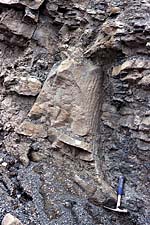 |
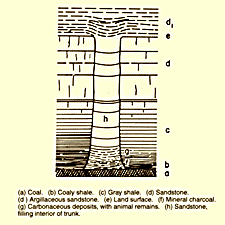 |

In the early part of the Carboniferous, during the Mississippian Period, crustal plates were pulling apart in the northern Appalachian Mountains of eastern North America. This resulted in the formation of several basins separated by highlands. These basins filled with non-marine sediments that include sandstones, siltstones, and coals, through the Late Carboniferous, or Pennsylvanian, and into the Early Permian. The rapid rate of deposition of these sediments can be observed in the 4000m section of Pennsylvanian strata around Joggins, Nova Scotia.
 |
 |
Joggins scale trees : Above, you can see the trunk of one of the large scale trees preserved at the Joggins site. Note the pick hammer for scale. To the right is a diagram of typical sediment layers associated with trees at this site.
Within the Joggins basin, are the skeletal remains of one of the earliest known terrestrial vertebrate faunas. The remains of these early tetrapods have typically been found in the stumps of upright fossil tree trunks. The ancient fossil forests of this area, marked by abundant coals, were dominated by the large Carboniferous lycopod trees Lepidodendron and Sigillaria. When these ancient swamps were periodically flooded, the bases of the trees were buried. The trees died and the exposed tops fell over, leaving hollowed stumps that became deep pits into which unwary amphibians and reptiles fell and died. The most common tetrapod from this locality is a stem-tetrapod, the temnospondyl Dendrerpeton acadianum.
Most remains of Dendrerpeton are from the inside of ancient trees and are incomplete and flattened. However, a recently discovered specimen was found, not associated with a tree trunk, that has excellent three-dimensional preservation. This 3-D preservation provides new knowledge about the function of structures in Dendrerpeton.
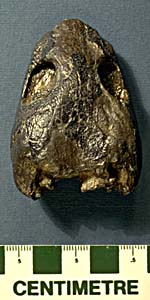
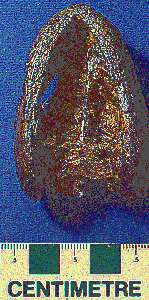
For example, there has been much discussion about the origin of a hearing apparatus in early tetrapods. How did it arise? Is it analogous to the mammalian ear? It has commonly been inferred that the stapes (or "stirrup"), a bone in the cheek region of early tetrapods, was important for transmitting airborne vibrations to the inner ear. In turn, the embayment of the squamosal or cheek region was associated with the development of a tympanum or ear drum. However, the 3-D specimen of Dendrepeton, like other early tetrapods such as Greererpeton, has a massive stapes suggesting that this was a support structure rather than a hearing structure. The squamosal (or cheek) embayment, then, was probably inherited by this group of animals directly from their distant ancestors and had no functional relationship to hearing. Presumably these animals could hear seismic vibrations (sounds transmitted through the ground) but they could not detect airborne vibrations. This leads to the conclusion that the capacity to hear air-borne sounds probably evolved more than once in the history of vertebrate life.
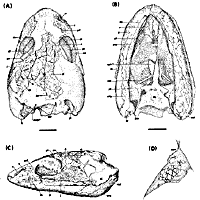 |
 |
Dendrerpeton skull : On the left, an interpretive diagram of the fossil Dendrerpeton skull pictured above. On the right, a reconstruction of what the intact skull probably looked like.

Further readings on this topic:

